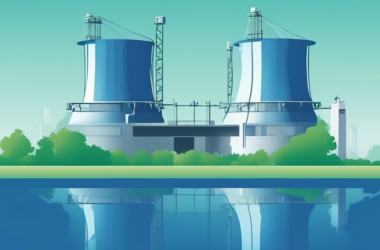The White Mesa Mill, nestled in southeastern Utah, stands as the nation’s sole conventional uranium processing facility. Its yellow walls and gray handrails, coated in yellowcake residue, serve as a backdrop to the day-to-day operations that transform raw uranium ore into usable U308. However, as routine maintenance temporarily halts production, the extraction of uranium ore from the nearby Pinyon Plain Mine near the Grand Canyon raises concerns among the Navajo Nation.
With past uranium mines leaving a deadly legacy on tribal lands, the transportation of uranium through the reservation triggers alarm bells. The potential hauling of tons of radioactive material through Navajo communities raises fears of accidents and contamination, while also sparking legal battles to safeguard tribal sovereignty and environmental health.
As the U.S. looks to boost domestic nuclear energy production, the demand for uranium rises, fueling the operation of facilities like the White Mesa Mill. However, the push for cleaner energy sources stands in contrast to the potential environmental risks and cultural impacts posed by increased uranium mining and transportation through tribal lands.
As the debate between economic development and environmental protection rages on, the future of uranium mining on tribal lands hangs in the balance. Will the Navajo Nation successfully advocate for stricter regulations and safeguards, or will the allure of uranium profits prevail over tribal concerns? Only time will tell as the battle for control over tribal natural resources unfolds.










